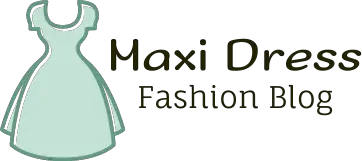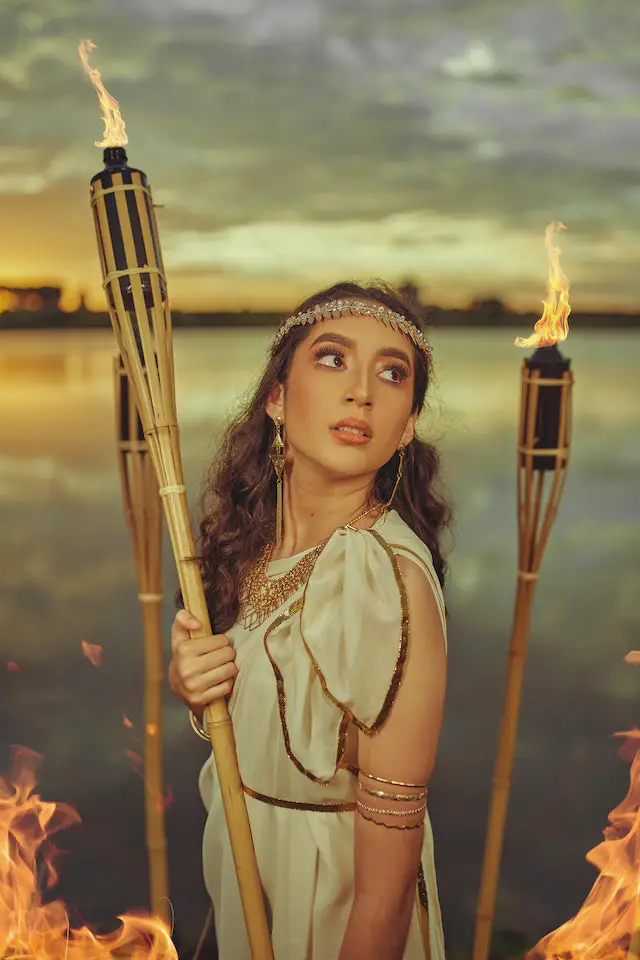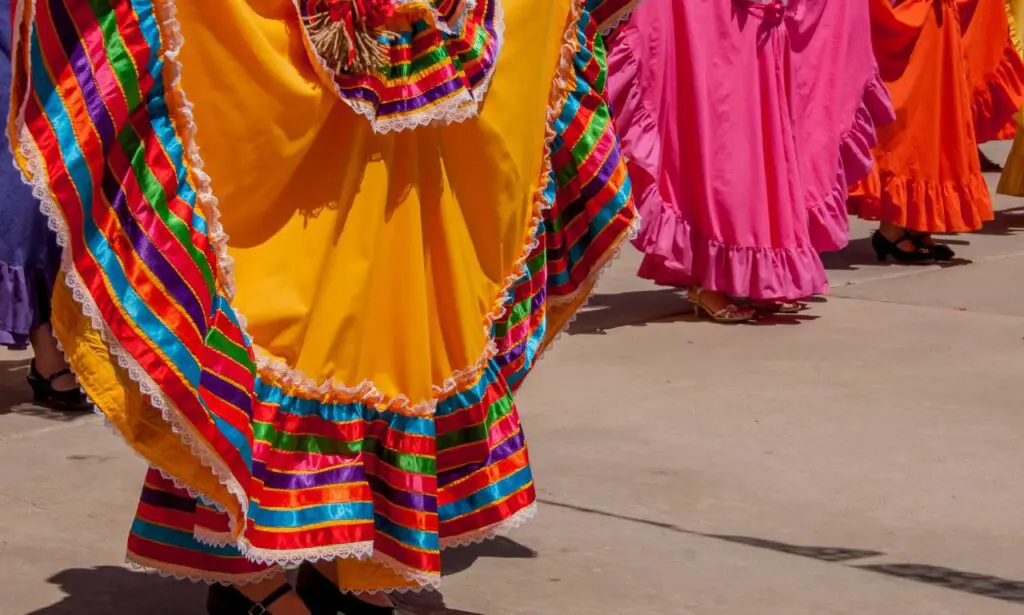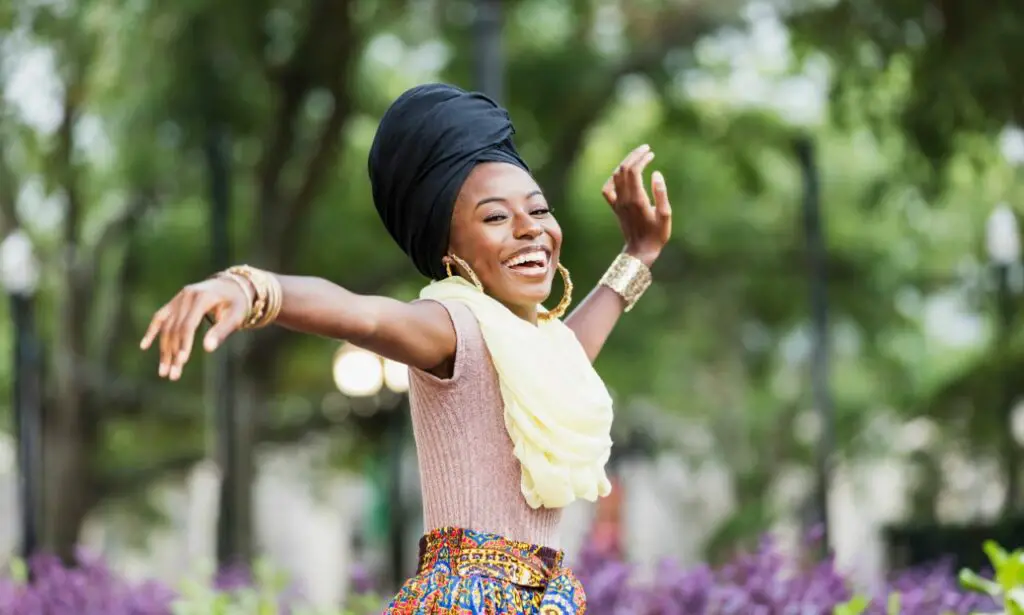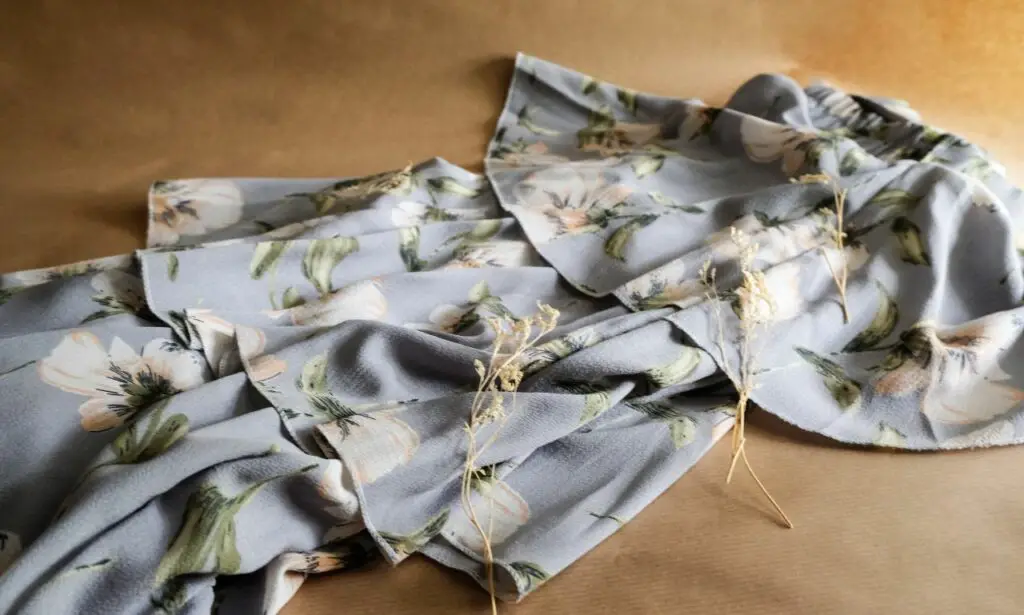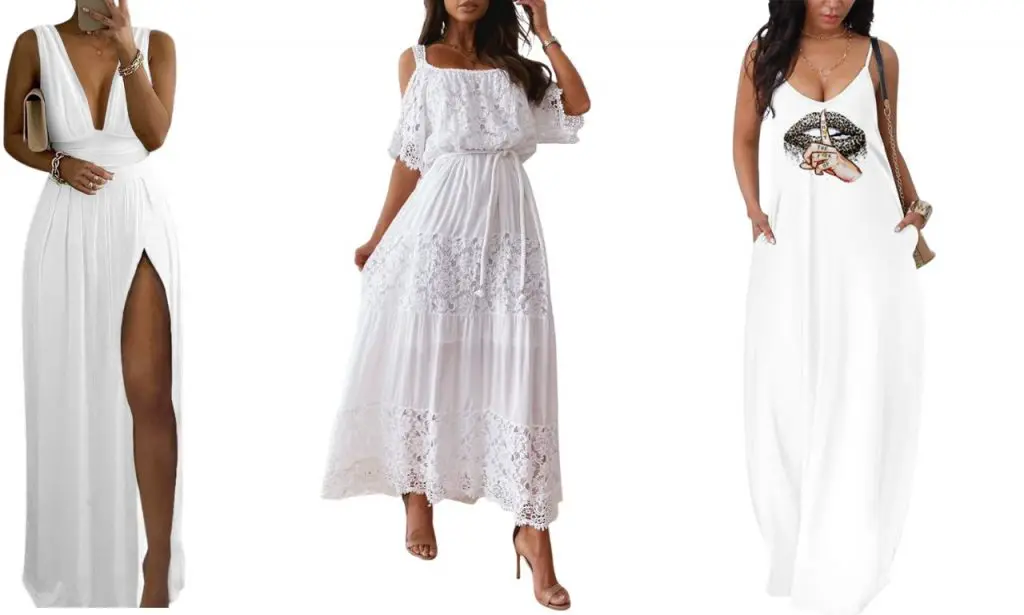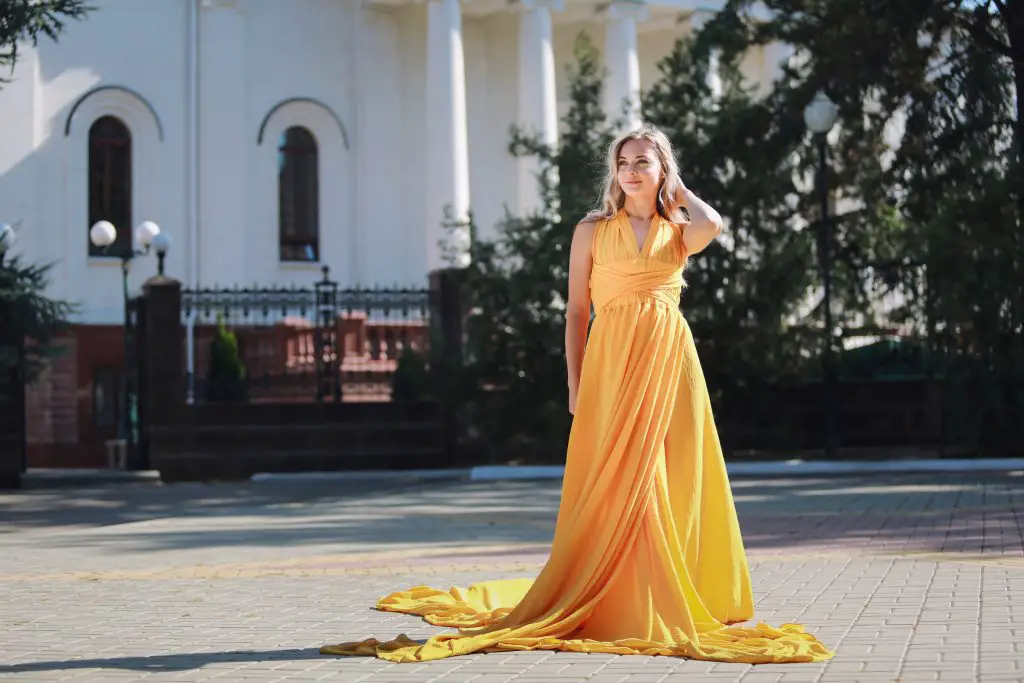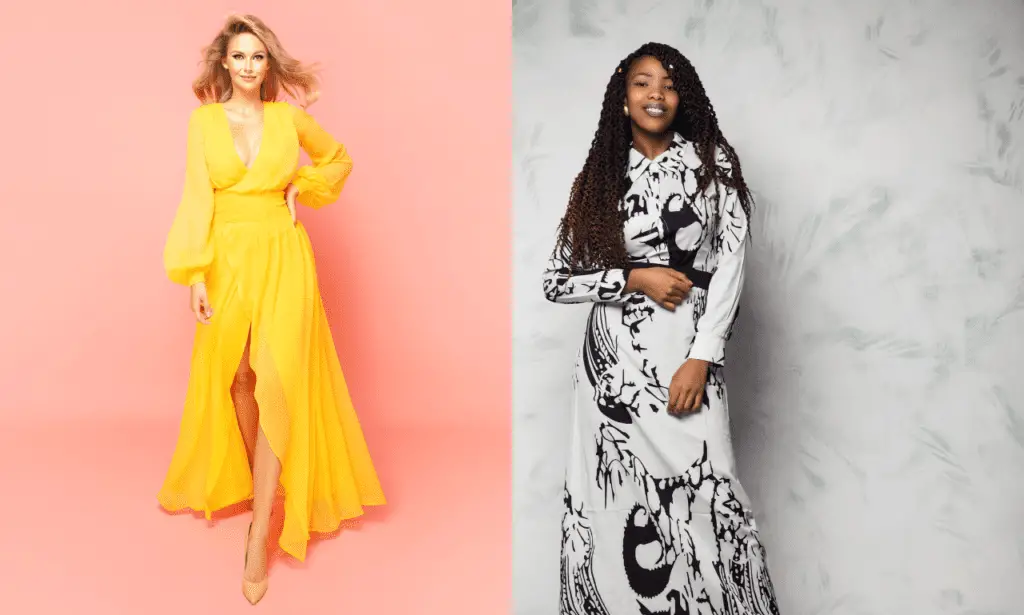Today’s fashion dictates clothing rules, but in ancient times, tradition was supreme. Women’s clothing followed a distinct pattern that was prevalent in the region, always following the morals of the time. Comfort and ergonomics were also important considerations as people dressed for various occasions.
Ancient Greek fashion was simple and practical. A simple fabric was styled in a variety of ways for various occasions. A typical Ancient Greek outfit was a large rectangle of fabric such as wool and linen. Silk was for the royals and the affluent.
The Common Types of Traditional Grecian Dresses
Clothes for men and women were essentially the same, draping around the body in soft folds with no tight fitting. These were the main types of clothes worn by ancient Greeks:
1. Chitons
It was the most common type of clothing worn by both men and women. It was a large rectangular wool cloth wrapped around the body from right to left.
It was designed to allow free movement of the arms. It was sometimes designed on its borders and even had bone buttons.
2. Chalmys
Men and some women wore a short cloak-like cloth over their chiton, similar to a cape that was fastened around the neck and draped over the shoulders.
This was primarily used by upper-class servants and soldiers.
3. Himatan
The Himatan was worn as a cloak, robe, or blanket by Greek generals, kings, queens, and nobles. They primarily used it to protect themselves from the cold Greek winters, as it was made of thick wool.
4. Peplos
It was light and often pleated, made of linen, and could be worn by both genders. Upper-class women frequently wore a wide chiton as an undergarment with ornamented peplos over it.
In addition to these clothes, women were required to wear Perizoma (underwear) and a strophion (bra). During the winter, women would wear an ornamented shawl known as the Epiblema.

Regional Traditional Grecian Dresses
We will travel back in time and from region to region to see the outfits that were worn, and while they did not remain fashionable, they did remain in history.
Let’s explore the different clothing from different regions in Greece.
1. Karagouna Costume
The Karagouna is worn by the Karagouni, an ethnic group scattered across the Thessaly plain in central Greece. The Karagouna is also the name of a traditional Greek folk dance.
In older days, women wore the costume as wedding attire. The intricate, multi-layered outfits with bright colors were intended to represent the wealth of the region. Today, the costume has been simplified and is popular among traditional Greek dance groups.
2. Skiathos Traditional Custome
Surprisingly, the locals used to wear their traditional costumes every day! This traditional apparel still exists and is preferred by many local women for national celebrations, parades, and festivals.
The official costume includes a shirt, an undershirt, socks, a velvet gilet embellished with decorative details, a woolen inner dress, a golden belt, and one large woolen fringed scarf–which was worn in winter.
The attire was further accessorized with jewelry such as big earrings with florins, bracelets, rings, and golden chains.
3. Sarakatsani Costume
The Sarakatsani costume is strikingly different from other Greek costumes in that it is predominantly black and white, and almost all of it was traditionally handcrafted from the wool of their flocks.
A garment called zonee, which means a belt, is wrapped around the hips over this. The podia, or apron, is worn over the fustani but not over the zonee.
It is quadrangular in shape, with a wider base. It does not wrap around the waist but rather hangs lower, just below the zonee. It has upper-corner bands that are attached to the waist.
4. Amalia Dress
During King Otto’s reign in liberated Greece, Queen Amalia showed an interest in fashion. Amalia created a romantic gown for the royal court that became the national Greek costume, known as the Amalia gown.
It consists of a loose, white cotton or silk shirt with lace on the neck and handcuffs. Over the dress is a richly embroidered jacket or vest, usually in dark blue velvet. The skirt was ankle-length and made of silk, usually blue.
The dress was paired with a soft hat, or fez, with a long, golden silk tassel, which was traditionally worn by married women, and a black veil for church. This outfit became the norm for all Christian women in the Ottoman Empire.
5. Mesogitiki Costume
The Mesogitiki costume is distinguished for everyday, bridal, and festive occasions. Their differences are found in embroidery and fabrics. The everyday costume included the half-hat, the shirt, the tunic, the embroidered silhouette, the apron, the vest, and the scarf.
The brides of the upper social status wore a golden uniform with silk and gold embroidered shirts. The bridal costume displayed the groom’s financial status, as both the shirt and the gold-sleeved jacket were gifts from the groom.
The jewels on the chest and headband consisted of golden coins from both the groom and his relatives. Women wore their hair in two braids and tied them with a floral handkerchief.
Modern Grecian-Style Maxi Dresses
Ancient Greece has provided much of the inspiration for modern-day dresses. Wool, cotton, and linen were the most common fabrics used in Greek clothing. Drapery was made from linen fabrics. Here are some examples of modern Grecian-style maxi dresses.
1. Empire Waist
The Empire Waist Maxi Dress is an apparel style with a fitted bodice that ends just below the bust, giving the dress a high-waisted appearance, and a long and loosely fitting gathered skirt.
This look aims to draw attention away from the midsection and toward the bust. The dress’s shape also helps to lengthen the appearance of the body.
2. Long-Sleeved Maxi Dress
A Long-sleeved Maxi Dress must have sleeves that cover the entire arms up to the wrists. This style was popular in Ancient Greece during the winter. Sheer or mesh fabrics are used to create sleeves that make the dress appropriate for summer.
3. Fit-and-Flare Maxi Dresses
The fit-and-flare maxi dresses have a fitted bodice and a flared skirt. This maxi dress style draws inspiration from the Amalia dress. The fit-and-flare maxi dress flatters all body types because it creates an ideal shape with a narrowed waist and proportionately shaped hips.
4. Tiered Maxi Dress
Tiered Maxi Dresses are made of tiered layers sewn horizontally to add volume and style. The layers are mostly made of the same material. Despite their volume, they can be made of a lightweight fabric to be extremely light.
5. Maxi Dress with One Shoulder
The one-shoulder maxi dresses are timeless and classic. The one-shoulder maxi dresses are conservatively sexy and a perfect way to make a bold fashion statement without going overboard.
Its distinct asymmetrical style flatters women of all body types while emphasizing the shoulders and collarbones. These maxi dresses are ideal as standalone gowns.
6. The Drape Maxi Dress
Drapes were an essential part of Greek clothing, worn by both men and women and secured with pins and brooches. Women adored drapes as they were comfortable and showed off their feminine features.
Modern designers have revived the Greek drape pattern in evening gowns with elaborate pleats at the waistline and below the neckline. Such drapes soften the outfit and give it a more feminine appearance.
Hercules
The best example of how modern Greek wear is perceived today is in Disney’s Hercules:
By now I’m sure you can tell what type of dresses inspired the Muses’ animators.
Megara’s dress is a simple purple maxi dress with spaghetti sleevess. What makes it look Greek (other than the movie’s setting) is the circles on the sleeves, and the skirt part of the dress, reminding of a green column.
How to style a Grecian Style Maxi Dress
A Grecian style maxi dress is a beautiful and classy way to show off your curves without feeling too exposed. This versatile style will look great with strappy sandals, heels or even flat boots depending on the accessories you choose. Let’s go over how to style this gorgeous dress and flatter your shape!
Color
First things first, you want to consider color when choosing a Grecian style maxi dress. Neutral colors such as black, white or tan are great options that look amazing on every skin tone and can easily be paired with accessories in bolder colors. If you’re feeling daring, why not try a brighter hue? Just make sure to choose a shade that looks great on your skin tone.
Shoes
It is important when styling a Grecian style maxi dress to pick the right shoes. For example, strappy sandals with a little bit of height will make your legs look long and lean while heels or wedges with ankle straps add just enough coverage to keep the look classy and sexy. For a more casual look, opt for flat boots or sandals that tuck under the dress for a cute boho vibe.
My favorite option is Gladiator Sandals: flats, with straps wrapped around your legs.
Accessories
The key to pairing any outfit is to choose accessories that complement and enhance your overall look. When styling a Grecian style maxi dress, it is crucial to think about what type of statement you want your accessories to make. If you’re going for a more elegant and sophisticated vibe, try pairing your dress with simple pieces like dainty jewelry or tassel earrings. For a bolder look, choose larger statement pieces such as chunky necklaces or dramatic earrings.
Greek Hairstyle
To complete your Grecian style maxi dress look, why not try a stylish Greek hairstyle? There are many gorgeous options to choose from, and you can easily find inspiration by browsing Pinterest or Instagram. Some classic choices include tousled waves, perfectly tousled curls, braids, or going for a full-on boho vibe with tousled tresses or a braid crown.
Another option would be a Tainia: that Greek ribbon wrapped around the head.
Grecian style is a term from the 19th century that refers to the Greek Revival style. The Grecian-style dress has loose, draped fabric that is pleated and has ruching at the shoulders, similar to a toga.
Absolutely! Wearing a Grecian-style maxi dress to a wedding is a great option all year. Wear a maxi-length dress to a wedding to be both comfortable and fashionable.
